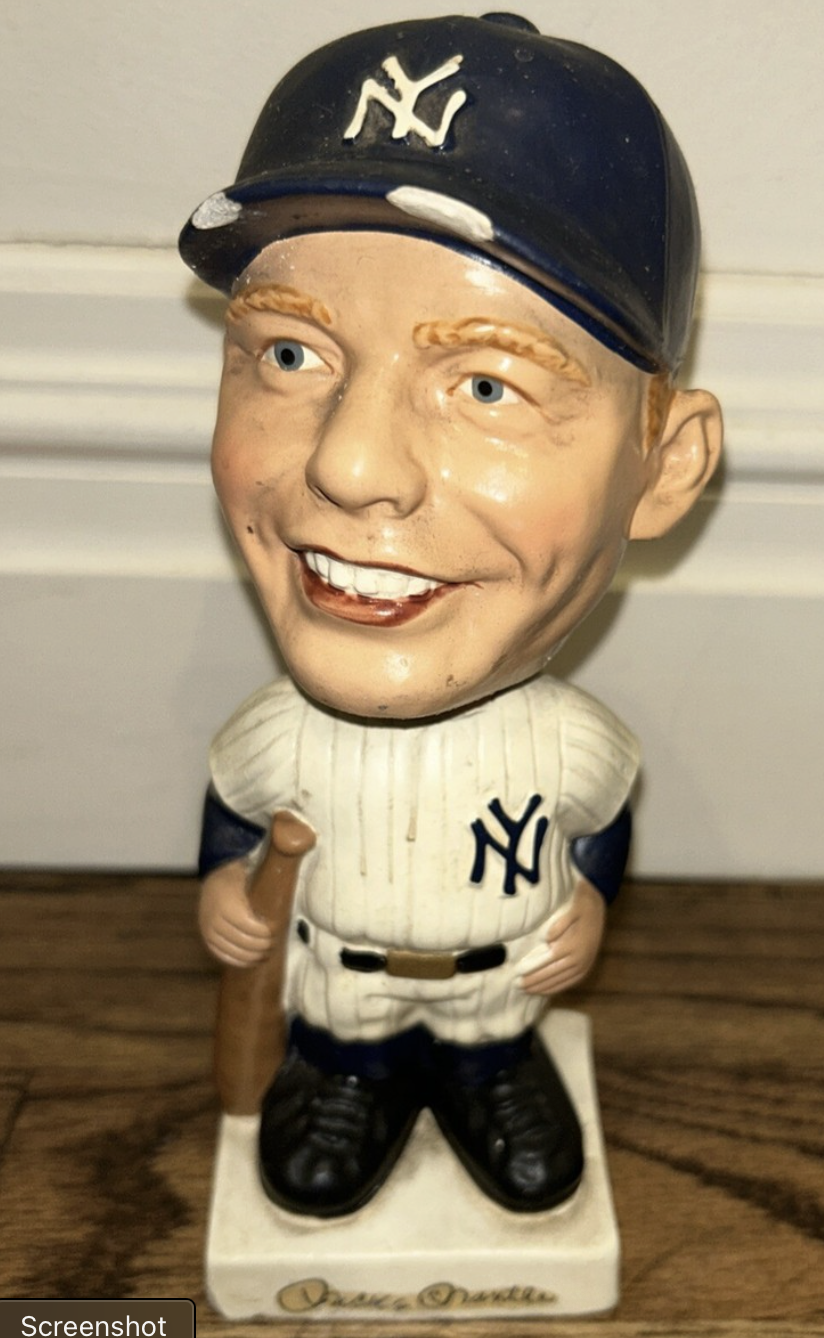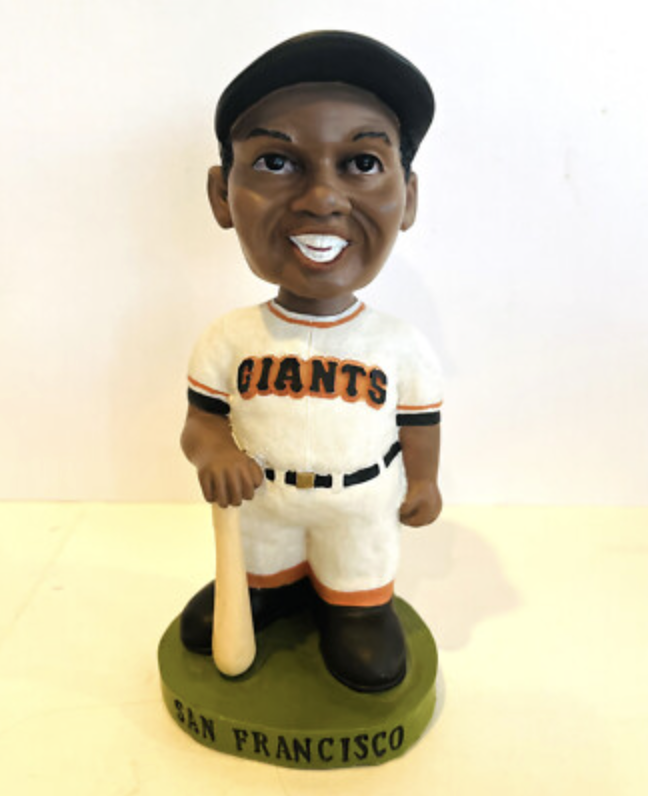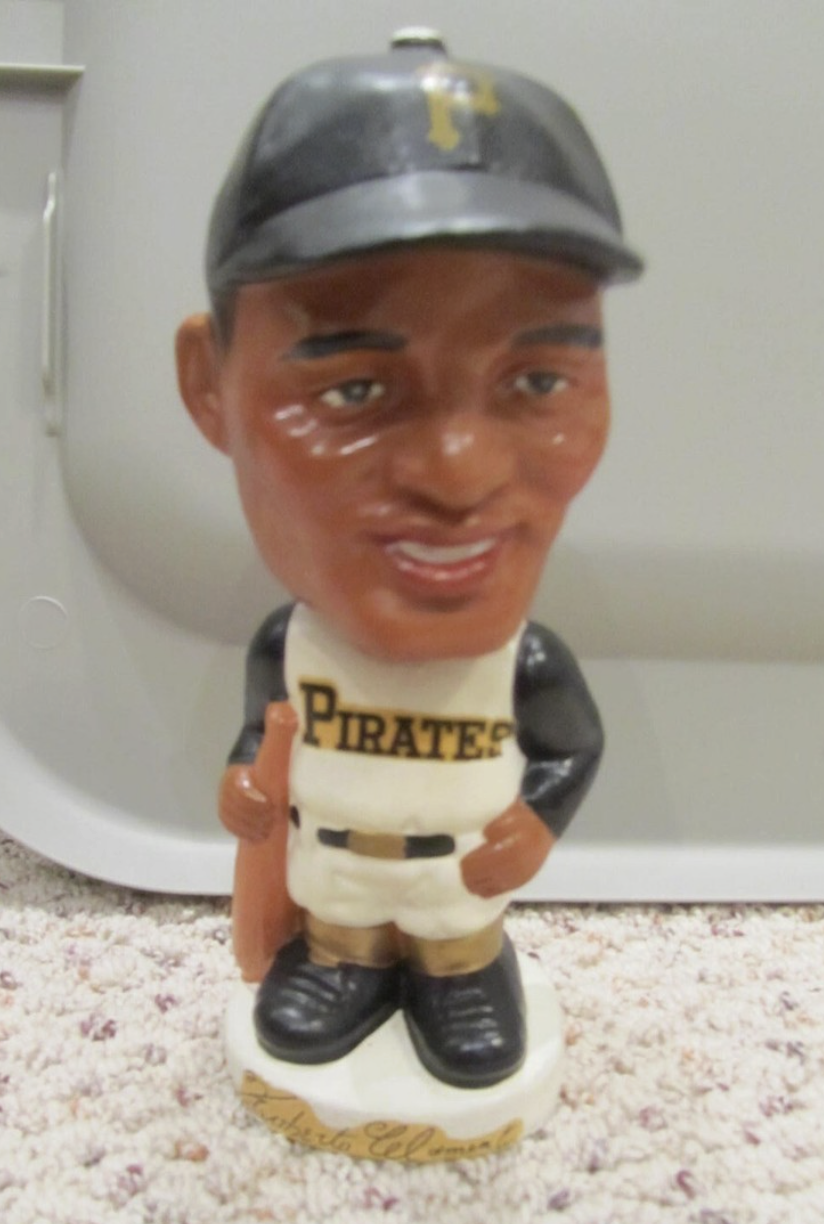The History of Bobbleheads in Baseball: From Gimmick to Collectible Goldmine
Danny Goodman was a man known for having a cluttered office, a hustler’s instinct, and a sixth sense for what baseball fans didn’t yet know they wanted or needed.
As the longtime vice president of advertising and promotions for the L.A. Dodgers, Goodman boasted a shrewdness that exceeded the title of front office exec. He was a master of stadium psychology, specifically as it could be used to entice a few extra dollars from fans.
Famously, he was the first baseball executive to ask his grounds crew to drag the infield between innings — not for maintenance, but to give vendors more time to hawk goods. He once even watered down seats so fans would be more inclined to buy team-branded seat cushions.
His verbal style could be just as quirky as his strategies. In true Yogi Berra fashion, Goodman once declared, “You want celebrities for this event? I’ll get you celebrities you never even heard of.”
Under Goodman’s direction, the Dodgers didn’t just lead the league in attendance. They led the major leagues in souvenirs, sales, and stadium innovation. Caps, pennants, seat cushions, plastic bats, and celebrity guest nights were all part of his arsenal.
“To say that Danny Goodman was the director of advertising for the L.A. Dodgers is like saying James Brown dabbled in soul music,” said one observer. “Danny Goodman was the Godfather of the baseball souvenir industry.”
But perhaps his most enduring contribution to modern sports marketing was his decision to import a wobbly-headed figurines from Japan and sell them as a keepsake for baseball fans.
He first sold these bobbleheads in 1958 at Gilmore Field, home of the Pacific Coast League’s Hollywood Stars. And while these collectibles were imported to serve as little more than a gimmick, the bobblehead would evolve to become a promotional juggernaut, a must-have for collectors, and a staple of American culture.
The Origins of Bobbleheads: From Temple Figurines to Early Collectibles
Though Goodman hadn’t introduced bobbleheads to baseball fans until the late 1950s, the concept of spring-headed figurines had already been nodding its way through the centuries.
The earliest known versions of bobblehead-like figures date back to 17th-century China, where so-called “temple nodders” were crafted to resemble deities like Buddha. These serene, slow-nodding figurines were thought to convey wisdom and calm, offering gentle approval with every tip of the head.
European aristocrats took notice as global trade expanded. And in the 18th and 19th centuries, these seemingly exotic artifacts began popping up in drawing rooms across Russia, Germany, and France.
By the early 1900s, Germany had become a major producer of bobblehead-style dolls, using porcelain or bisque to craft novelty animals and caricatures of people. Not yet tied to sports, these figurines served as kitschy household decorations or carnival prizes.
Then came Japan’s post-World War II manufacturing boom. Factories there began producing cheap, molded novelty toys, including bobbleheads, for the American market. These mid-century Japanese bobbleheads often depicted generic characters with oversized heads, rosy cheeks, and charmingly odd expressions.
There was nothing valuable about these playful yet forgettable trinkets at the time. But they were affordable, eye-catching, and endlessly adaptable. That’s what grabbed Goodman’s attention.
While browsing Japanese imports for his Dodgers concession stands, Goodman saw more than a quirky souvenir. He saw an affordable keepsake that was visually fun, easy to display, and which offered a relatively simple tie-in to the team.
From that moment on, bobbleheads and baseball became forever linked.
How Bobbleheads Became a Baseball Tradition
Once bobbleheads found their way into ballparks, it didn’t take long for fans to fall in love with the keepsakes and for Major League Baseball to recognize their long-term potential.
In the early 1960s, shortly after Goodman introduced the souvenirs at Gilmore Field, MLB released its first official series of baseball-themed bobbleheads.
At first, they weren’t modeled after individual players but instead were sold as generic team mascots, each sporting a uniform and cap matching the franchise. With wide, boyish faces, rosy cheeks, and vacant smiles, the dolls looked more like Little League all-stars than professional athletes.
But fans didn’t seem to mind.
Crafted from fragile papier-mâché and standing about seven inches tall, these bobbleheads were sold at concession stands in stadiums and through mail-order catalogues. Each doll’s head wobbled on a spring-mounted neck and sat atop a simple gold-painted base. Some were even stamped with “Danny Goodman Concessions,” a subtle nod to the man behind the movement.
Then came the player editions.
In 1960, MLB introduced the first bobbleheads that featured specific player names like Mickey Mantle, Willie Mays, Roger Maris, and Roberto Clemente. While the heads still shared the same stock face, the uniforms and inscriptions made it clear which player each one was supposed to represent.
Throughout the 1960s, bobbleheads remained a staple of baseball souvenirs. They were sold at stadiums during regular-season games and commemorated World Series appearances, including the 1960 Yankees and Pirates showdown.
Any fan could now take home a piece of the moment via a tangible, if slightly wobbly, reminder of their team’s triumphs.
But by the mid-1970s, the bobblehead boom began to lose momentum. The dolls were prone to chipping and cracking, their designs hadn’t evolved much, and fan interest shifted to newer, flashier merchandise. For a time, the bobblehead faded into the background as a nostalgic footnote in stadium souvenirs.
Still, like any good collector's item, all it needed was time — and the right moment — to make a comeback.
The 1999 Willie Mays Bobblehead That Revived Baseball Collectibles
For more than two decades, bobbleheads quietly nodded in the background of baseball culture. While some fans still clutched their vintage Mantles and Clementes, the spring-headed souvenir had largely disappeared from stadium shelves.
Then in 1999, the San Francisco Giants unknowingly sparked a full-fledged bobblehead revival that would turn a nostalgic gimmick into a promotional powerhouse.
The occasion was the Giants' final season at Candlestick Park, and the team was planning a series of themed giveaway nights to mark the historic send-off. Among the planned promotions: a Willie Mays bobblehead giveaway.
The idea came from Mario Alioto, the Giants’ marketing executive, and Valerie McGuire, the team’s promotions director. It was a throwback gesture meant to honor Mays, the franchise’s most iconic player.
“…I remember when I was a kid going to Candlestick,” Alito recalled in a 2016 radio interview. “They didn't have bobblehead giveaways back then, but in the souvenir stand, besides buying a Giants pennant or a program or a keychain, there was always a bobblehead doll, and I had one. I've had one for a long time, and it's still at my mom's house today. And I was thinking, maybe we can have a bobblehead day and that'll be something that many of our fans will remember."
The Giants partnered with Alexander Global Promotions, a novelty company based in Seattle, to produce the dolls. The final bobblehead was short, chunky, cartoonish, and perfect.
So, on May 9, 1999, the first 20,000 fans through the gate received a Willie Mays bobblehead, and the reaction was immediate. Fans lined up early, collectors buzzed, and demand soared.
Media outlets picked up the story. Resale prices jumped. And a long-dormant souvenir was suddenly the hottest item in the ballpark.
Within a year, eight other MLB teams had launched their own bobblehead giveaways. Soon, it was a league-wide trend — and it didn’t stop with baseball. Teams across the NBA, NFL, NHL, MLS, and even minor league clubs adopted bobblehead nights as a way to boost attendance and create fan engagement.
What began as a retro callback turned into a modern marketing masterstroke. By the early 2000s, bobbleheads were no longer a novelty from the past. They were a key part of the stadium experience and fully embedded in the fabric of fan culture.
The Rise of Bobbleheads as Sports Collectibles
Today’s bobbleheads are no longer just souvenirs. They’re cultural artifacts, limited-edition art pieces, and sometimes even investments. Their endless variety has become part of the appeal.
After the 1999 Willie Mays bobblehead reignited demand, teams began pushing the boundaries of what a bobblehead could be. No longer restricted to generic grins and team uniforms, they began to reflect iconic moments, player personalities, and even pop culture crossovers.
There are bobbleheads with sunglasses, backward caps, and gold chains. Some commemorate record-breaking feats. Others, like Tony Bennett and Frank Sinatra bobbleheads, even came with sound chips. The Philadelphia Phillies once gave away a Charlie Manuel talking bobblehead; the Potomac Nationals promoted one featuring Trea Turner as the Road Runner.
“Who doesn’t love a bobblehead?” said Phil Skylar, co-founder of the National Bobblehead Hall of Fame and Museum (yes, that’s real) in Milwaukee, Wis. “They’re a great way to show off your passion for a favorite team, player, or character, and they’re fun to have around. Many of them appreciate in value quite a bit over time, which is an added bonus.”
Today, teams don’t just hand out bobbleheads. They build entire marketing campaigns around them. Calendars are released months in advance, collectors circle the dates, and tickets to “bobblehead nights” often sell out faster than other games.
In some cities, fans line up hours early just to make sure they get their hands on a bobblehead before supplies run out.
“They’re fun to collect, and the majority of them are free — you can’t buy them — which adds a unique dimension to them for a lot of people,” Skylar added.
While most bobbleheads are priceless only in sentimental terms, some can fetch serious money on the secondary market This is especially true for limited-run, player-specific, or vintage models like:
An original 1961 Mickey Mantle bobblehead in mint condition, which can sell for thousands of dollars.
Modern bobbleheads, like the 1999 Willie Mays giveaway, which regularly resells for hundreds, especially if they’re in their original boxes.
More recently, buzz has surrounded the latest George Costanza Yankees bobblehead. This promotion quickly gained national attention because early bobblehead resale offers were far exceeding the average price of game tickets.
The Future of Bobbleheads in Baseball and Pop Culture
Bobbleheads have certainly come a long way from their temple-nodding origins and papier-mâché beginnings. Once considered as gimmicky keepsakes, they’ve grown into a full-fledged corner of sports fandom and pop culture — one that now shares shelf space with high-end memorabilia, autographed gear, and, yes, Funko Pop! figures.
What makes bobbleheads so enduring, however, isn’t just their nostalgic charm or collectible value. It’s their adaptability. Teams and brands continue to find creative new ways to reimagine them, from talking, dancing, dual-player bobbleheads to figurines that light up to commemorate viral social media moments.
In short, they’ve become small but mighty vessels for storytelling, commemoration, and fan identity.
As for the future of bobbleheads … that’s harder to predict. Promotional trends come and go, and sports marketing continues to evolve with technology and changing fan expectations. Maybe bobbleheads will get more interactive, or maybe they’ll go digital (God forbid), paired with NFTs or augmented reality features.
But here’s what seems certain: there will always be a place for physical bobbleheads in collector culture. Whether they honor Hall of Famers, cult heroes, beloved mascots, or characters in pop culture, bobbleheads have carved out a unique niche that blends fandom, nostalgia, and artistry.
So, while we can’t say exactly where the bobblehead craze is headed next, I’m confident of one thing: these figurines are likely to keep nodding along as the world of sports and pop culture evolves.
Why Bobbleheads Still Matter
From Danny Goodman’s first imports in the 1950s to the revival sparked by Willie Mays in 1999, bobbleheads have evolved from quirky giveaways into one of the most recognizable and enduring parts of sports culture. They’re not just collectibles — they’re conversation starters, nostalgic keepsakes, and symbols of fandom that connect generations of baseball (and sports) fans.
As promotions get more creative and collectors continue to chase rare finds, one thing’s for sure: bobbleheads aren’t going anywhere. They’ll keep nodding along, reminding us that the joy of sports isn’t only about the games we watch, but also about the stories — and souvenirs — we take home.




